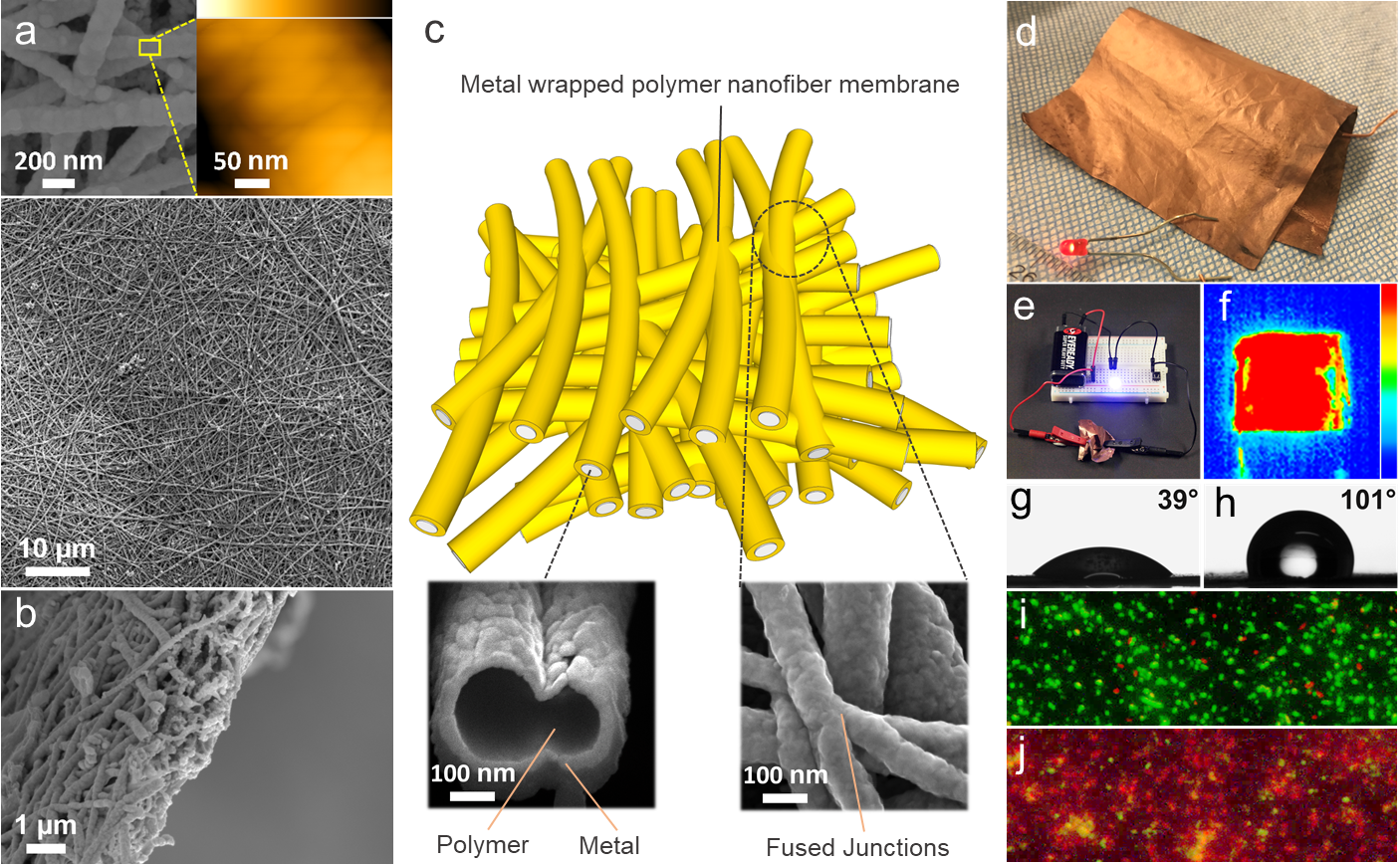Flexible and Ultrathin Metal-Coated Nanofiber Membranes
Flexible and Ultrathin Metal-Coated Nanofiber Membranes for Electromagnetic Interference Shielding
We developed elegant coating methods on nanofibers to achieve conductive membranes which maintain low weight, high flexibility and gas permeability. An outstanding application was found in electromagnetic interference shielding. The results are published in “Flexible and Ultrathin Waterproof Cellular Membranes Based on High-Conjunction Metal Wrapped Polymer Nanofibers for Electromagnetic Interference Shielding” in Advanced Materials (Zeng, Z., Jiang, F., Yue, Y., Han, D., Lin, L., Zhao, S., Zhao, Y-B., Pan, Z., Li, C., Nyström, G., Wang, J. 2020, external pagehttps://doi.org/10.1002/adma.201908496call_made).

Ultrathin, lightweight and flexible electromagnetic interference (EMI) shielding materials are urgently demanded to address EM radiation pollution. Efficient design to utilize the shields' microstructures is crucial yet remains highly challenging for maximum EMI shielding effectiveness (SE) while minimizing material consumption. Herein, novel cellular membranes are designed based on a facile polydopamine assisted metal (copper or silver) deposition on electrospun polymer nanofibers. The membranes can efficiently exploit the high-conjunction cellular structures of metal and polymer nanofibers, and their interactions for excellent electrical conductivity, mechanical flexibility and ultrahigh EMI shielding performance. EMI SE reaches more than 53 dB in an ultrabroadband frequency range at a membrane thickness of merely 2.5 µm and a density of 1.6 g/cm3, and an SE of 44.7 dB is accomplished at the lowest thickness of 1.2 µm. The normalized specific SE is up to 232860 dB·cm2/g, significantly surpassing that of other shielding materials ever reported. Moreover, integrated functionalities were discovered in the membrane, such as antibacterial, waterproof properties, excellent air permeability, high resistance to mechanical deformations and low-voltage uniform heating performance, offering strong potential for applications in aerospace, portable and wearable smart electronics.
